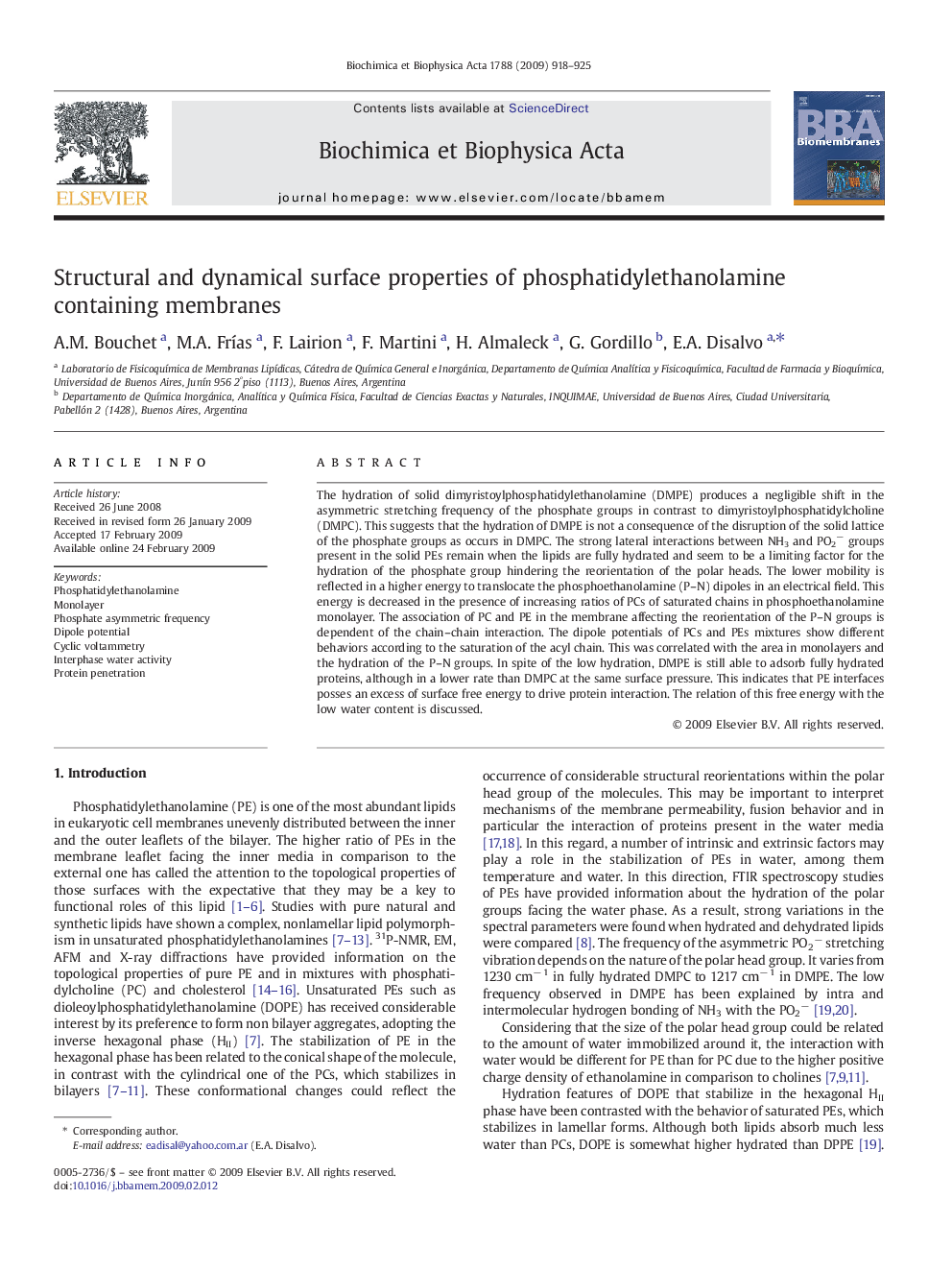| Article ID | Journal | Published Year | Pages | File Type |
|---|---|---|---|---|
| 1945168 | Biochimica et Biophysica Acta (BBA) - Biomembranes | 2009 | 8 Pages |
The hydration of solid dimyristoylphosphatidylethanolamine (DMPE) produces a negligible shift in the asymmetric stretching frequency of the phosphate groups in contrast to dimyristoylphosphatidylcholine (DMPC). This suggests that the hydration of DMPE is not a consequence of the disruption of the solid lattice of the phosphate groups as occurs in DMPC. The strong lateral interactions between NH3 and PO2− groups present in the solid PEs remain when the lipids are fully hydrated and seem to be a limiting factor for the hydration of the phosphate group hindering the reorientation of the polar heads. The lower mobility is reflected in a higher energy to translocate the phosphoethanolamine (P–N) dipoles in an electrical field. This energy is decreased in the presence of increasing ratios of PCs of saturated chains in phosphoethanolamine monolayer. The association of PC and PE in the membrane affecting the reorientation of the P–N groups is dependent of the chain–chain interaction. The dipole potentials of PCs and PEs mixtures show different behaviors according to the saturation of the acyl chain. This was correlated with the area in monolayers and the hydration of the P–N groups. In spite of the low hydration, DMPE is still able to adsorb fully hydrated proteins, although in a lower rate than DMPC at the same surface pressure. This indicates that PE interfaces posses an excess of surface free energy to drive protein interaction. The relation of this free energy with the low water content is discussed.
